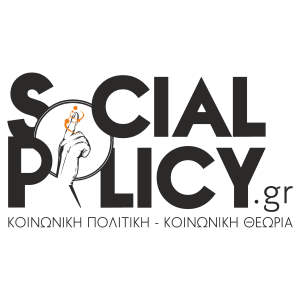Βραβείο 2021

Βραβείο 2022

Στρατηγικός συνεργάτης

Υποστηρικτές Επικοινωνίας


Open access article: https://www.nature.com/articles/s41380-022-01670-z
Abstract
Introduction
The wide range of psychosocial interventions designed to assist people with Autism Spectrum Disorder (ASD) makes it challenging to compile and hierarchize the scientific evidence that supports the efficacy of these interventions. Thus, we performed an umbrella review of published meta-analyses of controlled clinical trials that investigated the efficacy of psychosocial interventions on both core and related ASD symptoms.
Methods
Each meta-analysis that was identified was re-estimated using a random-effects model with a restricted maximum likelihood estimator. The methodological quality of included meta-analyses was critically appraised and the credibility of the evidence was assessed algorithmically according to criteria adapted for the purpose of this study.
Results
We identified a total of 128 meta-analyses derived from 44 reports. More than half of the non-overlapping meta-analyses were nominally statistically significant and/or displayed a moderate-to-large pooled effect size that favored the psychosocial interventions. The assessment of the credibility of evidence pointed out that the efficacy of early intensive behavioral interventions, developmental interventions, naturalistic developmental behavioral interventions, and parent-mediated interventions was supported by suggestive evidence on at least one outcome in preschool children. Possible outcomes included social communication deficits, global cognitive abilities, and adaptive behaviors. Results also revealed highly suggestive indications that parent-mediated interventions improved disruptive behaviors in early school-aged children. The efficacy of social skills groups was supported by suggestive evidence for improving social communication deficits and overall ASD symptoms in school-aged children and adolescents. Only four meta-analyses had a statistically significant pooled effect size in a sensitivity analysis restricted to randomized controlled trials at low risk of detection bias.
Discussion
This umbrella review confirmed that several psychosocial interventions show promise for improving symptoms related to ASD at different stages of life. However, additional well-designed randomized controlled trials are still required to produce a clearer picture of the efficacy of these interventions. To facilitate the dissemination of scientific knowledge about psychosocial interventions for individuals with ASD, we built an open-access and interactive website that shares the information collected and the results generated during this umbrella review.
Citation: Gosling, C.J., Cartigny, A., Mellier, B.C. et al. Efficacy of psychosocial interventions for Autism spectrum disorder: an umbrella review. Mol Psychiatry 27, 3647–3656 (2022).
Open access article: (https://pubmed.ncbi.nlm.nih.gov/35532041/ )
Abstract
Background: Social interaction and social communication are among the central areas of difficulty for autistic people. Music therapy uses music experiences and the relationships that develop through them to enable communication and expression, thus attempting to address some of the core problems of autistic people. Music therapy has been applied in autism since the early 1950s, but its availability to autistic individuals varies across countries and settings. The application of music therapy requires specialised academic and clinical training which enables therapists to tailor the intervention to the specific needs of the individual. The present version of this review on music therapy for autistic people is an update of the previous Cochrane review update published in 2014 (following the original Cochrane review published in 2006).
Objectives: To review the effects of music therapy, or music therapy added to standard care, for autistic people.
Search methods: In August 2021, we searched CENTRAL, MEDLINE, Embase, eleven other databases and two trials registers. We also ran citation searches, checked reference lists, and contacted study authors to identify additional studies.
Selection criteria: All randomised controlled trials (RCTs), quasi-randomised trials and controlled clinical trials comparing music therapy (or music therapy alongside standard care) to 'placebo' therapy, no treatment, or standard care for people with a diagnosis of autism spectrum disorder were considered for inclusion.
Data collection and analysis: We used standard Cochrane methodological procedures. Four authors independently selected studies and extracted data from all included studies. We synthesised the results of included studies in meta-analyses. Four authors independently assessed risk of bias (RoB) of each included study using the original RoB tool as well as the certainty of evidence using GRADE. MAIN RESULTS: We included 16 new studies in this update which brought the total number of included studies to 26 (1165 participants). These studies examined the short- and medium-term effect of music therapy (intervention duration: three days to eight months) for autistic people in individual or group settings. More than half of the studies were conducted in North America or Asia. Twenty-one studies included children aged from two to 12 years. Five studies included children and adolescents, and/or young adults. Severity levels, language skills, and cognition were widely variable across studies. Measured immediately post-intervention, music therapy compared with 'placebo' therapy or standard care was more likely to positively effect global improvement (risk ratio (RR) 1.22, 95% confidence interval (CI) 1.06 to 1.40; 8 studies, 583 participants; moderate-certainty evidence; number needed to treat for an additional beneficial outcome (NNTB) = 11 for low-risk population, 95% CI 6 to 39; NNTB = 6 for high-risk population, 95% CI 3 to 21) and to slightly increase quality of life (SMD 0.28, 95% CI 0.06 to 0.49; 3 RCTs, 340 participants; moderate-certainty evidence, small to medium effect size). In addition, music therapy probably results in a large reduction in total autism symptom severity (SMD -0.83, 95% CI -1.41 to -0.24; 9 studies, 575 participants; moderate-certainty evidence). No clear evidence of a difference between music therapy and comparison groups at immediately post-intervention was found for social interaction (SMD 0.26, 95% CI -0.05 to 0.57, 12 studies, 603 participants; low-certainty evidence); non-verbal communication (SMD 0.26, 95% CI -0.03 to 0.55; 7 RCTs, 192 participants; low-certainty evidence); and verbal communication (SMD 0.30, 95% CI -0.18 to 0.78; 8 studies, 276 participants; very low-certainty evidence). Two studies investigated adverse events with one (36 participants) reporting no adverse events; the other study found no differences between music therapy and standard care immediately post-intervention (RR 1.52, 95% CI 0.39 to 5.94; 1 study, 290 participants; moderate-certainty evidence). AUTHORS' CONCLUSIONS: The findings of this updated review provide evidence that music therapy is probably associated with an increased chance of global improvement for autistic people, likely helps them to improve total autism severity and quality of life, and probably does not increase adverse events immediately after the intervention. The certainty of the evidence was rated as 'moderate' for these four outcomes, meaning that we are moderately confident in the effect estimate. No clear evidence of a difference was found for social interaction, non-verbal communication, and verbal communication measured immediately post-intervention. For these outcomes, the certainty of the evidence was rated as 'low' or 'very low', meaning that the true effect may be substantially different from these results. Compared with earlier versions of this review, the new studies included in this update helped to increase the certainty and applicability of this review's findings through larger sample sizes, extended age groups, longer periods of intervention and inclusion of follow-up assessments, and by predominantly using validated scales measuring generalised behaviour (i.e. behaviour outside of the therapy context). This new evidence is important for autistic individuals and their families as well as for policymakers, service providers and clinicians, to help in decisions around the types and amount of intervention that should be provided and in the planning of resources. The applicability of the findings is still limited to the age groups included in the studies, and no direct conclusions can be drawn about music therapy in autistic individuals above the young adult age. More research using rigorous designs, relevant outcome measures, and longer-term follow-up periods is needed to corroborate these findings and to examine whether the effects of music therapy are enduring.
Citation: Geretsegger M, Fusar-Poli L, Elefant C, Mössler KA, Vitale G, Gold C. Music therapy for autistic people. Cochrane Database Syst Rev. 2022 May 9;5(5):CD004381. doi: 10.1002/14651858.CD004381.pub4. PMID: 35532041; PMCID: PMC9082683.
Open access article: ( https://pubmed.ncbi.nlm.nih.gov/34043900/ )
Abstract
Introduction: Autism spectrum disorder (ASD) is a neurodevelopmental disorder characterized by persistent deficits in social communication and social interaction, associated with the presence of restricted and repetitive patterns of behavior, interests, or activities. Cannabis has been used to alleviate symptoms associated with ASD.
Method: We carried out a systematic review of studies that investigated the clinical effects of cannabis and cannabinoid use on ASD, according to the Preferred Reporting Items for Systematic Reviews and Meta-Analyses (PRISMA checklist). The search was carried out in four databases: MEDLINE/PubMed, Scientific Electronic Library Online (SciELO), Scopus, and Web of Science. No limits were established for language during the selection process. Nine studies were selected and analyzed.
Results: Some studies showed that cannabis products reduced the number and/or intensity of different symptoms, including hyperactivity, attacks of self-mutilation and anger, sleep problems, anxiety, restlessness, psychomotor agitation, irritability, aggressiveness perseverance, and depression. Moreover, they found an improvement in cognition, sensory sensitivity, attention, social interaction, and language. The most common adverse effects were sleep disorders, restlessness, nervousness and change in appetite.
Conclusion: Cannabis and cannabinoids may have promising effects in the treatment of symptoms related to ASD, and can be used as a therapeutic alternative in the relief of those symptoms. However, randomized, blind, placebo-controlled clinical trials are necessary to clarify findings on the effects of cannabis and its cannabinoids in individuals with ASD.
Citation: Silva EAD Junior, Medeiros WMB, Torro N, Sousa JMM, Almeida IBCM, Costa FBD, Pontes KM, Nunes ELG, Rosa MDD, Albuquerque KLGD. Cannabis and cannabinoid use in autism spectrum disorder: a systematic review. Trends Psychiatry Psychother. 2022 Jun 13;44:e20200149. doi: 10.47626/2237-6089-2020-0149. PMID: 34043900; PMCID: PMC9887656.
Open access article: (https://journalppw.com/index.php/jpsp/article/view/3644/2394)
Abstract
Autism spectrum disorders (ASD) are a complex group of neurodevelopment disorders characterized by impairments in communication skills, social skills and repetitive behavior. There are varieties of different therapeutic treatment options that are frequently used with people with Autism Spectrum Disorder. In the Clinic Brain Neuropsychiatric Institute & Research Center, Barasat, Kolkata, India, different management approached are taken for the treatment of ASD for betterment of life. These include: psychotherapy, occupational therapy, speech therapy, special education, art therapy, music and movement therapy, animal therapy, etc.Since to date there is no specific medication developed to autism itself, the psycho-pharmacologic approach is addressed to some core symptoms, such as hyperactivity, anxiety, depression, etc. Psycho-pharmacotherapy can eventually improveadhesion to non-medical treatment of ASD patients. Occupational therapists (OT) offer a wide range of therapies for individuals with ASD on the basis of specific deficits and difficulties.In the evaluation and treatment of individuals with ASD, OT professionals tend to address ADLs, IADLs, adaptive behavior, rest and sleep, employment/pre-employment, and social participation.Over the last few decades, speech and language therapy, in particular the direct intervention type - the characteristic of which is the treatment directed to the abilities and inabilities of each child, has been emphasized as a means of social adjustment of communicational behavior. Simulation of the pragmatic level of language is possible in persons with ASD, it must be preceded by targeted diagnostics and assessment of individual components of the pragmatic level of language. Positive teacher attitudes are an important predictor of thesuccessful education of children with disabilities, including those with ASDs.However, the severity and pervasiveness ASD often leads tothe teaching and inclusion of this group of pupils to beseen as especially complex. Expressive Arts Therapy, specifically arts based therapeutic interventions can offer a unique and comprehensive approach to address a variety of the defining symptoms of autism and in doing so, may have the potential to improve relational capacity for those with the disorder. Art therapy can be used to address tactile and sensory integration, communication, emotion and affect regulation, as well as a way to practice social skills and increase the likelihood of bonding. The music-based interventions are effective treatment tools for individuals with ASDs because they harnessthe musical strengths of this population while alleviating their impairments. The music-based interventions particularly attractive for individuals with ASDs.The focus in recent research has shifted from the conventional use of animals for domestication purpose to clinical applications to improvise human well-being. Animal-assisted therapy (AAT) is a type of therapy that involves use of animals in the therapeutic or treatment process, also for the treatment of ASD.
Citation: ROLE OF DIFFERENT THERAPIES IN THE MANAGEMENT OF AUTISTIC SPECTRUM DISORDER, JOURNAL OF POSITIVE SCHOOL PSYCHOLOGY, Vol. 6 No. 4 (2022), Dr. Gautam Saha and Dr. Arpita Chatterjee.
Open access article: ( https://pubmed.ncbi.nlm.nih.gov/34238038/ )
Abstract
Executive functions are often impaired in autistic people and relate to important outcomes such as mental health, success in school and work, and quality of life. Evaluating executive functions helps autistic people, clinicians and families identify targets for external supports and skill building. Youth self-report of executive function has not been studied, yet we know that self-report from autistic youth is key to understanding other cognitive/behavioral phenomena in autism such as anxiety, obsessions/compulsions, sensory sensitivities and repetitive behaviors. We investigated self- and parent-report of executive function problems in 197 autistic youth without intellectual disability (ages 11–18 years), including the magnitude and profiles of executive function problems autistic youth report across subdomains of EF. We compared autistic self-report with that of 114 youth with ADHD without intellectual disability and 197 neurotypical youth. We found that autistic youth report significant executive function problems compared to neurotypical youth and a distinctive profile of challenges in comparison to ADHD youth. Parents and their autistic children diverged regarding the magnitude of the youth’s EF difficulties, but both identify inflexibility as the most impaired EF subdomain. Autistic youth and their parents were somewhat more concordant in their report of executive function problems than youth with ADHD and their parents, but only showed moderate concordance at best. These findings elevate the importance of asking autistic youth directly about their executive functioning when engaging them in assessment and intervention, or researching executive functions in autism.
Citation: Kenworthy L, Verbalis A, Bascom J, daVanport S, Strang JF, Pugliese C, Freeman A, Jeppsen C, Armour AC, Jost G, Hardy K, Wallace GL. Adding the missing voice: How self-report of autistic youth self-report on an executive functioning rating scale compares to parent report and that of youth with attention deficit hyperactivity disorder or neurotypical development. Autism. 2022 Feb;26(2):422-433. doi: 10.1177/13623613211029117. Epub 2021 Jul 9. PMID: 34238038; PMCID: PMC8742839.